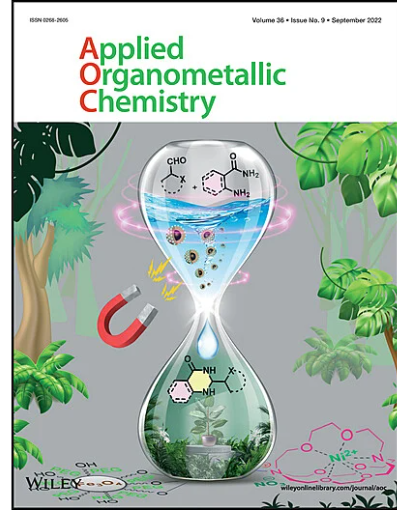Study of Charge Transfer Mechanism and Dielectric Relaxation of CdSe-MSA Nanocrystals
Abstract
The CdSe nanocrystals were synthesized in an aqueous medium containing mercaptosuccinic acid (MSA). The X-ray diffraction study verifies that CdSe-MSA has a cubic phase. Scanning electron microscopy (SEM) images show an array of approximately spherical nanoparticles with very small sizes. The electrical and dielectric properties of these nanocrystals were studied using the complex impedance method. By analyzing Nyquist diagrams, we derived the equivalent circuit consisting of R//C//CPE for temperaturesT ≤ 413 K, with a Warburg element appearing for T > 413 K, confirming the diffusion of MSA on the surface of the nanocrystals. The relaxation time (τ) was deduced by analyzing the spectra of M" using the Bergman equation, which is defined by an activation energy (Ea) of 0.743 eV. The conductivity follows Jonscher's power law, with DC conductivity (σDC) increasing in phase I (T ≤ 413 K) and decreasing in phase II (T > 413 K). The variation of s as a function of temperature shows that the conductivity adheres to the single CBH model in the semiconductor domain. It is observed that the hopping distance (RW) decreases with temperature and frequency, which explains the increase in charge carriers and the rise in conductivity in this temperature range.

 求助内容:
求助内容: 应助结果提醒方式:
应助结果提醒方式:


